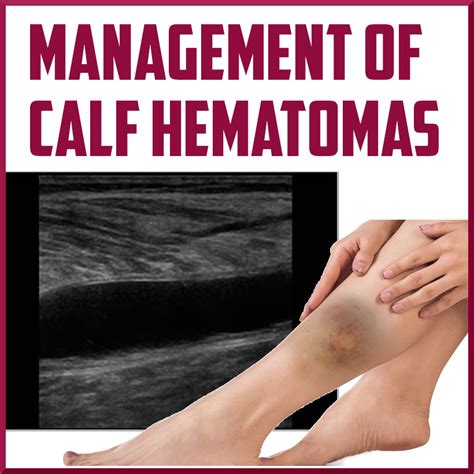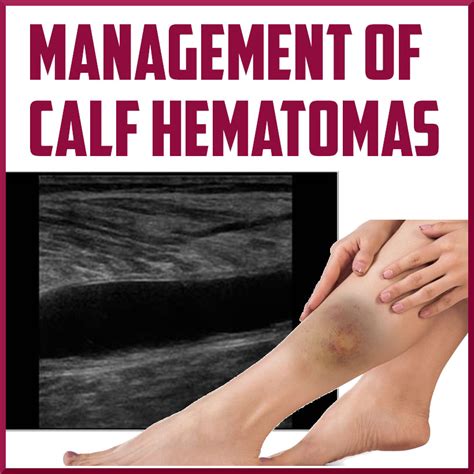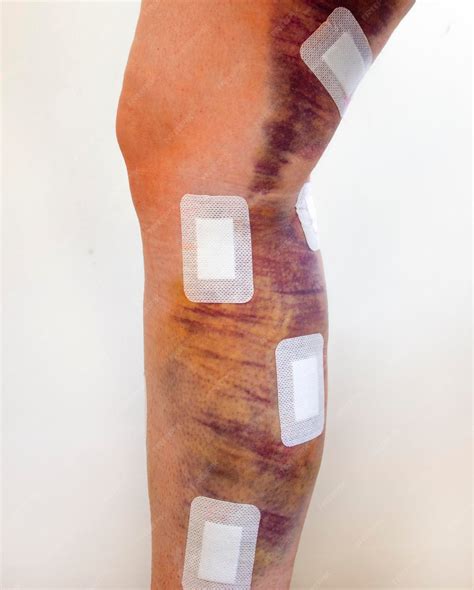Intro
Identify Leg Hematoma symptoms, treatment options, and causes. Learn about bruising, swelling, and pain management for leg hematomas, including diagnosis and recovery.
The human body is prone to various types of injuries, and one of the most common is a hematoma. A hematoma is a collection of blood outside of blood vessels, often caused by a break in the wall of a blood vessel, which allows blood to leak into the surrounding tissues. When this occurs in the leg, it is referred to as a leg hematoma. Leg hematomas can be painful and may lead to complications if not treated promptly. In this article, we will delve into the symptoms and treatment options for leg hematomas, providing you with a comprehensive understanding of this condition.
Leg hematomas can result from various factors, including trauma, injury, or even certain medical procedures. The symptoms of a leg hematoma may vary depending on the size and location of the hematoma, as well as the individual's overall health. Common symptoms include pain, swelling, bruising, and limited mobility in the affected leg. In some cases, the hematoma may be small and resolve on its own without any significant issues. However, larger hematomas can cause more severe symptoms, such as numbness, tingling, or even difficulty walking.
It is essential to seek medical attention if you suspect you have a leg hematoma, especially if you experience severe symptoms or if the hematoma is large. A healthcare professional will evaluate the affected area, taking into account your medical history and performing a physical examination to determine the size and location of the hematoma. In some cases, imaging tests such as ultrasound or MRI may be necessary to confirm the diagnosis and rule out any underlying conditions that may be contributing to the hematoma.
Causes And Risk Factors

Leg hematomas can be caused by a variety of factors, including injuries, medical procedures, and certain medical conditions. Trauma to the leg, such as a blow or a fall, can cause blood vessels to rupture, leading to a hematoma. Additionally, medical procedures like surgery or injections can also cause hematomas. Certain medical conditions, such as bleeding disorders or blood clotting disorders, can increase the risk of developing a leg hematoma. It is crucial to be aware of these risk factors to take preventive measures and seek medical attention if symptoms persist.
Types Of Leg Hematomas
There are several types of leg hematomas, each with distinct characteristics and treatment options. Subcutaneous hematomas occur just beneath the skin and are often caused by minor injuries. Intramuscular hematomas occur within the muscle and can be more severe, often requiring medical attention. Subfascial hematomas occur beneath the fascia, a layer of tissue that surrounds muscles, and can be more challenging to treat. Understanding the type of hematoma you have is essential in determining the best course of treatment.Symptoms And Diagnosis

The symptoms of a leg hematoma can vary depending on the size and location of the hematoma. Common symptoms include pain, swelling, bruising, and limited mobility in the affected leg. In some cases, the hematoma may be small and resolve on its own without any significant issues. However, larger hematomas can cause more severe symptoms, such as numbness, tingling, or even difficulty walking. A healthcare professional will evaluate the affected area, taking into account your medical history and performing a physical examination to determine the size and location of the hematoma.
Treatment Options
Treatment for leg hematomas depends on the size and location of the hematoma, as well as the individual's overall health. Small hematomas may resolve on their own with rest, ice, compression, and elevation (RICE). Larger hematomas may require medical attention, including pain management, physical therapy, or even surgical intervention. In some cases, blood thinners or other medications may be prescribed to prevent further clotting or to promote healing.Treatment And Management

Treatment for leg hematomas can be managed through a combination of self-care and medical interventions. Rest, ice, compression, and elevation (RICE) can help reduce pain and swelling. Over-the-counter pain medications, such as acetaminophen or ibuprofen, can also be used to manage pain. In some cases, physical therapy may be necessary to promote healing and restore mobility. It is essential to follow a healthcare professional's advice and attend follow-up appointments to ensure proper healing and prevent complications.
Complications And Prevention
While leg hematomas can be treated effectively, there are potential complications to be aware of. Infection, nerve damage, and chronic pain are possible complications if the hematoma is not treated promptly or properly. To prevent leg hematomas, it is essential to take precautions, such as wearing protective gear during sports or activities, avoiding certain medications that can increase the risk of bleeding, and maintaining a healthy lifestyle. By being aware of the causes, symptoms, and treatment options for leg hematomas, you can take steps to prevent and manage this condition.Recovery And Outlook

The recovery time for a leg hematoma can vary depending on the size and location of the hematoma, as well as the individual's overall health. Small hematomas may resolve on their own within a few days, while larger hematomas may take several weeks or even months to heal. It is essential to follow a healthcare professional's advice and attend follow-up appointments to ensure proper healing and prevent complications. With proper treatment and care, most people can make a full recovery from a leg hematoma and return to their normal activities.
Living With A Leg Hematoma
Living with a leg hematoma can be challenging, but there are ways to manage the condition and promote healing. It is essential to prioritize rest and avoid activities that can exacerbate the condition. Elevating the affected leg, applying ice, and taking pain medications as directed can help reduce pain and swelling. Additionally, maintaining a healthy lifestyle, including a balanced diet and regular exercise, can help promote healing and prevent future complications.Conclusion And Next Steps

In conclusion, leg hematomas are a common condition that can be caused by various factors, including injuries, medical procedures, and certain medical conditions. Understanding the symptoms, treatment options, and potential complications is essential in managing this condition. By prioritizing self-care, following a healthcare professional's advice, and attending follow-up appointments, you can promote healing and prevent future complications. If you suspect you have a leg hematoma, do not hesitate to seek medical attention to ensure proper diagnosis and treatment.
Final Thoughts
Leg hematomas can be a challenging condition to manage, but with the right treatment and care, most people can make a full recovery. It is essential to be aware of the causes, symptoms, and treatment options to take preventive measures and seek medical attention if symptoms persist. By being proactive and taking steps to promote healing, you can reduce the risk of complications and improve your overall quality of life.What are the common causes of leg hematomas?
+Leg hematomas can be caused by various factors, including injuries, medical procedures, and certain medical conditions, such as bleeding disorders or blood clotting disorders.
How are leg hematomas diagnosed?
+Leg hematomas are diagnosed through a physical examination, medical history, and imaging tests such as ultrasound or MRI to confirm the size and location of the hematoma.
What are the treatment options for leg hematomas?
+Treatment options for leg hematomas depend on the size and location of the hematoma and may include rest, ice, compression, elevation, pain management, physical therapy, or surgical intervention.
We hope this article has provided you with a comprehensive understanding of leg hematomas, including their causes, symptoms, treatment options, and potential complications. If you have any further questions or concerns, please do not hesitate to reach out to a healthcare professional. Share this article with others who may be experiencing similar symptoms, and let's work together to promote awareness and understanding of this condition.
